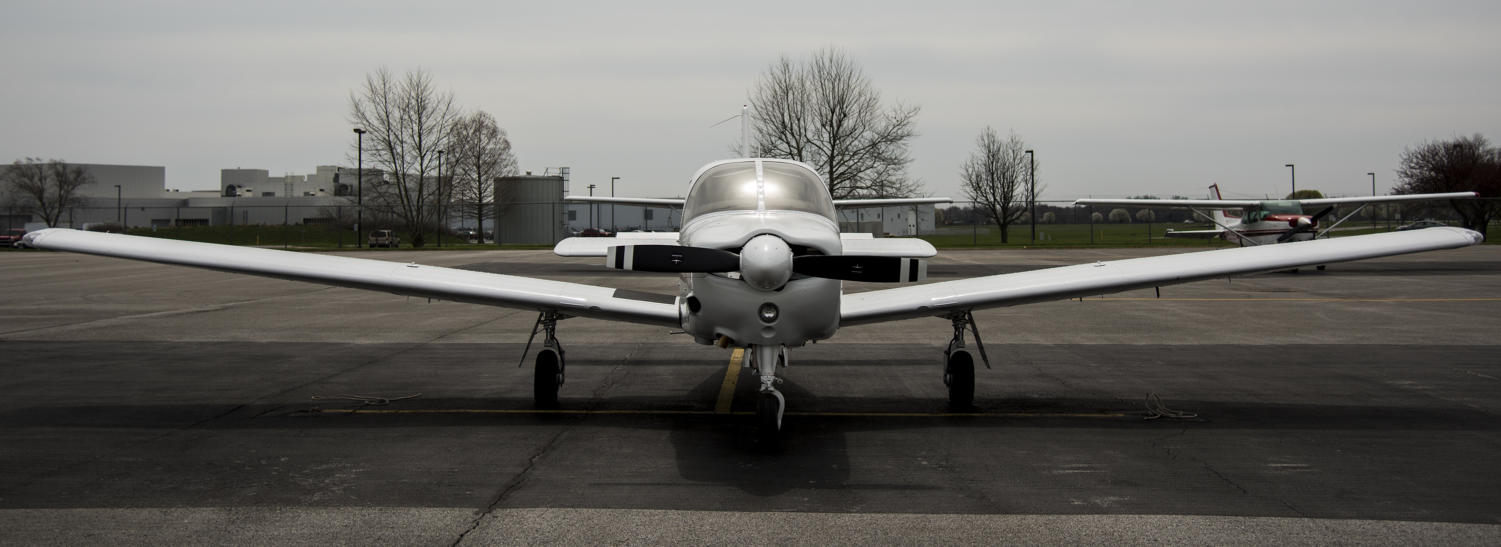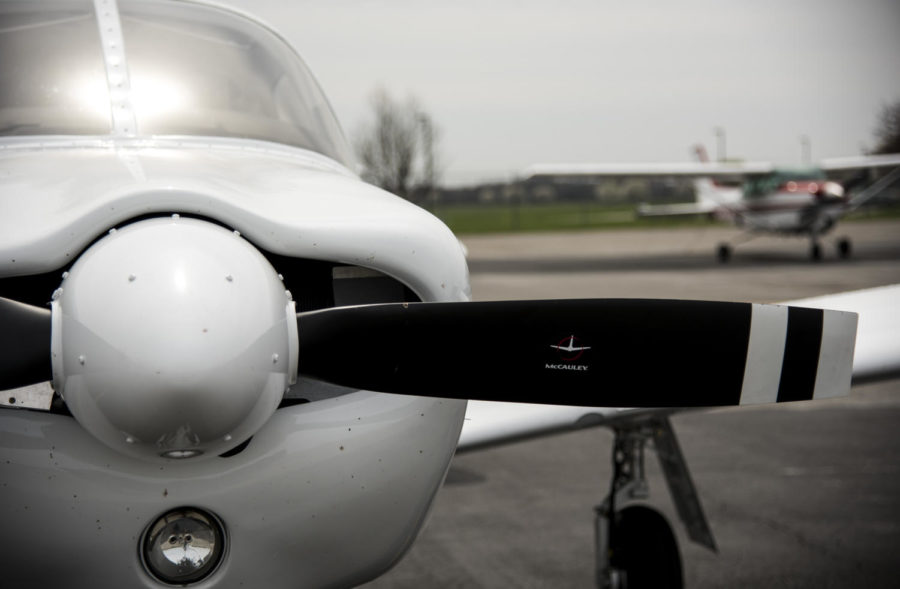SIU Department of Aviation brings three new planes to the fleet
A Piper Arrow sits outside a hangar at Southern Illinois Airport, Friday, April 6, 2018. The airplane was built specifically for SIU aviation students to train for their commercial flight certificates, and will be integrated into courses by the middle of summer.
April 16, 2018
The Department of Aviation purchased three new Piper Arrows for the fleet, replacing five early 80’s Cessna aircrafts.
Chief Flight Instructor and Program Coordinator John Voges said the new arrows were purchased using student flight fees, meaning the funds did not come out of the university’s budget.
“It’s just like going to a business, you’re going to end up paying for their service,” Voges said. “We don’t make a profit, we’re simply going to charge what we need.”
Advertisement
Voges said the older Cessna aircrafts were becoming increasingly expensive to maintain, comparing it to maintaining a vintage car.
“Imagine buying a 57 Chevy,” Voges said. “Where are you going to find the parts for a 57 Chevy? You don’t. If you need a part for a 57 Chevy [you go to a] salvage yard where you might find one, and if you do, what’s the cost of that? It’s extremely high.”
As the supply of those aircraft begins to dwindle, Voges said, there’s not too many people who have demand for those parts.
Voges said when deciding which planes to purchase to replace the Cessnas Piper Arrows were the best choice on the market.

A Piper Arrow sits outside a hangar at Southern Illinois Airport, Friday, April 6, 2018. The airplane was built specifically for SIU aviation students to train for their commercial certificates, and will be integrated into courses by the middle of summer.
“To go over some others, there are Composite Technologies, we’re not really a big fan,” Voges said. “We like the metal skin, it’s better overall. It stands the test of time better.”
Assistant flight instructor Chris Siderius said the new Piper Arrows specifically replace the five Cessna 172s and 182s because both are considered “complex aircrafts.”
A complex aircraft has retractable gear, Siderius said. Retractable gear can allow pilots to move the landing gear up into the body of the aircraft.
Advertisement*
“[The Cessnas] still have a lot of life left in them,” Siderius said. “But the reason we’ve elected to acquire new aircraft is that the equipment that’s onboard [the Cessnas] is an older style of equipment.”
The older planes use steam gauges, Siderius said, a whole cluster of dials such as altimeter or airspeed indicator.
“We’re getting rid of those for electronics light displays,” Siderius said. “Or what the industry calls ‘glass cockpit.’ Which is digital avionics, basically a computer screen. [It] provides all of the same information in a much easier to understand format.”
Siderius said students start with steam gauge planes to develop their skills first and foremost.
“Once they’ve demonstrated their abilities, we introduce them to the digital avionics,” Siderius said. “It’s like using an abacus before plopping a scientific calculator in your hands.”
Siderius said the purchase of the new Piper Arrows is the first time the university’s fleet is incorporating anything not made by Cessna.
“The biggest difference is that Piper aircraft tend to be what we call low-wing,” Siderius said. “The wing is on the underside of the fuselage instead of on top. They’re just as forgiving as a Cessna.”
Voges said the five older Cessna planes are being phased out this semester, so any students that started their training on those planes will finish it on them as well.
Safety Officer and Associate Professor for the Department of Aviation Mike Robertson said the shift from five to three aircrafts will work fine because the maintenance time in maintenance will decrease.
“From my perspective, being the safety officer, having these new aircraft is extremely beneficial,” Robertson said. “Because the likelihood of a gear-up type of an incident, is decreased significantly.”
Robertson said the new planes are great from a recruitment standpoint as well.
“Those other planes were not attractive. [They’re] 30-year-old planes,” Robertson said. “From a safety perspective, I think lowering that risk of having gear related accidents [is] probably going to make parents who send their students here feel better as well.”
Staff writer Jeremy Brown can be reached at jbrown@dailyegyptian.com.
To stay up to date with all your southern Illinois news, follow the Daily Egyptian on Facebook and Twitter.
Advertisement









